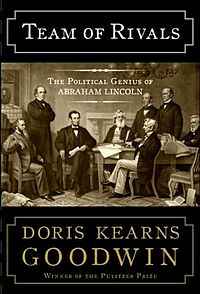Ever since I declared myself a journalism major, I’ve run into the pestering naysayers that genuinely think they are the first people to ever inform me of the fact that the news industry is dying. Thank you, kind sir. But I realize that.
The thing that people don’t realize is that the news industry isn’t dying at all; it’s just changing.
—
Cons (Because I like to save the best for last)
Some changes are, admittedly, sad. Big names buying up or dissolving small town publications is sad, and newspapers of all sizes that fizzle out is the worst of all. Ultimately, I’m a huge fan of multiple news sources. The competition means that every journalist has to constantly be on their toes. Everyone is digging for the next big story. And because there is competition, there is no shortage of exposes; no political figure can pay off Rupert Murdoch and avoid having his life story exposed to the public eye. And with smaller newspapers, there really is the potential for the news to serve its purpose and provide readers with the comprehensive information that they need.
With the incorporation of the Internet, there are some benefits to the media (see below). But unfortunately, there are also some major pitfalls. Readers who resort to online methods of news miss out on the reading experience of a hard copy, good-ol’-fashioned newspaper. As one beloved grandma proxy explained, oftentimes she’ll read the paper and end up reading a story about, say, Uganda that she wouldn’t have clicked open on a website. The Internet is about functionality and speed and instant gratification, which often the news isn’t. Reading a printed publication is an enjoyable and ritualistic ordeal. It’s a chance to sit with a cup of coffee and reflect on the goings on of the world. And it’s sad that people are not only missing out on that (glorious) ritual, but also on the various happenings in Uganda.
Pros
Negativity aside, there are many benefits of multi-media journalism. Firstly, though small time newspapers are fizzling out or being absolved, more and more bloggers are cranking out new methods of news. They are revealing details and contact people on their own, harnessing the power of the Freedom of Information Act (and the power of being annoying) to draw out the real details on people’s lives. Their AP style might be for crap, and they may not have consistent verb tense, but they’re still providing some sort of news. They are providing that diversity that might otherwise fizzle out with the small publications.
The Internet is also making “breaking news” a term of redundancy. With the use of immediate online publication and updates, and by harnessing the networking power of Facebook and twitter, news is always current and immediate. No more waiting for the next morning’s paper. Everything is here and now and journalists are constantly under pressure to have the most comprehensive, up-to-date info on various stories. And that kind of pressure makes for quality news for the consumer.
I mentioned before the vintage appeal of the “good-ol’-fashioned” printed paper. And I genuinely think that it is wonderful. While I was in Boston, I subscribed to the Boston Globe; even if I didn’t have opportunity to read it one day (due to 8 a.m.s or some rude cheapskate stealing my paper), it at least smelled nice. But really, the process of reading a paper is thoroughly enjoyable to me. It’s a flashback to morning lattes on my back porch with my dad sharing interesting tidbits of news, while my mom did the morning crosswords. I always read the Union-Tribune and the sports pieces by Mark Zieglar, while my dad took the remaining sports stories (which typically disappeared in the bathroom) and his Wall Street Journal.
Random tangent… When I move back to Boston in June, I already plan on renewing my subscription to the Globe. But this morning, I was flipping through Women’s Wear Daily and have been thinking about subscribing to it as well. WWD is often more focused on the industry than actual fashion. And I think that it provides a decent example of what I mean when I say that the news needs more diversity. Because WWD is a specialty publication, it falls under that category. Plus, I need to edumacate myself about the world of fashion. I’m hopelessly illiterate. Okay, tangent over.
Lastly (though I’m sure there are other points) is the incredible ability to harness multimedia and use it to complement stories. Though the newspaper industry has been hit hard by the cons listed above, the magazine industry and some noteworthy newspapers have stayed afloat. The key, however, is always to complement.
Unless it is listed as an “online magazine,” like glo.com or an “online newspaper,” like Huffington Post, content on a publications website SHOULD NOT match that of it’s printed form. A website and a print copy should be two separate–and stand alone–items. If there’s any particular reason why the magazine industry has fared better than the newspaper, it is because they have perfected their strengths. Reading a physical magazine is a ritual and readers know this. It’s necessary for sunbathing and drinking summer cocktails by the pool. Furthermore, if you look on MC’s website, you won’t find the same content. Our full-length feature stories are often cut short, but the website also has videos, polls, links and quizzes. It has blogs (!) and additional content, as well. Come to think of it, the personality of MC’s site is vastly different than its printed personality.
I’ve actually been blessed to live in two cities–San Diego and Boston–whose papers–The Union-Tribune and The Boston Globe, respectively–are recognized as some of the best in the country. The U-T site has information about restaurants and weather/tides and local neighborhoods that couldn’t possibly fit in the printed paper. And Boston.com has its own stories, boatloads of multimedia content, even its own staff.
For more info on the ways that the Internet might affect organizations (though not specifically news), check out Jeff Howe’s video on croudsourcing–a term he coined and wrote a book about. By the way, he’s joining Northeastern’s Journalism School staff this fall to teach a class called Online Journalism and I can’t take it because it interferes with another class I signed up for. But still… wham-bamming awesome. Tangent #2 over.
Then there’s the whole nitty-gritty info about social media, which is basically free advertising and helps readers to feel like they are literally there as the news calls come in. From a news standpoint, twitter is amazing, because journalists can brief a story in 140 words before it’s even written. The Globe could tweet: “New info on today’s front page story. Stay tuned.”
As a loosely related side note, notice all the links in this post? That’s another thing the Internet does for journalism. Not only as I brain barfing my little heart out, but I’m providing you various opportunities to see my examples. Links do to an article what pictures do for books: They make it pretty and interesting and help people to envision and better grasp my ideas. Snazzy, no?
—
I don’t really know what I’m getting at. I guess I just hope to point out that my job is not disappearing, thank you very much. I’m fighting the list of cons (which is conspicuously shorter) by blogging and writing, by working in the industry and starting up my own small-time publication. So go ahead, tell me I can’t do something. “Can’t” statements have always been more of a dare than a criticism for me, anyway. Just watch me.
###











